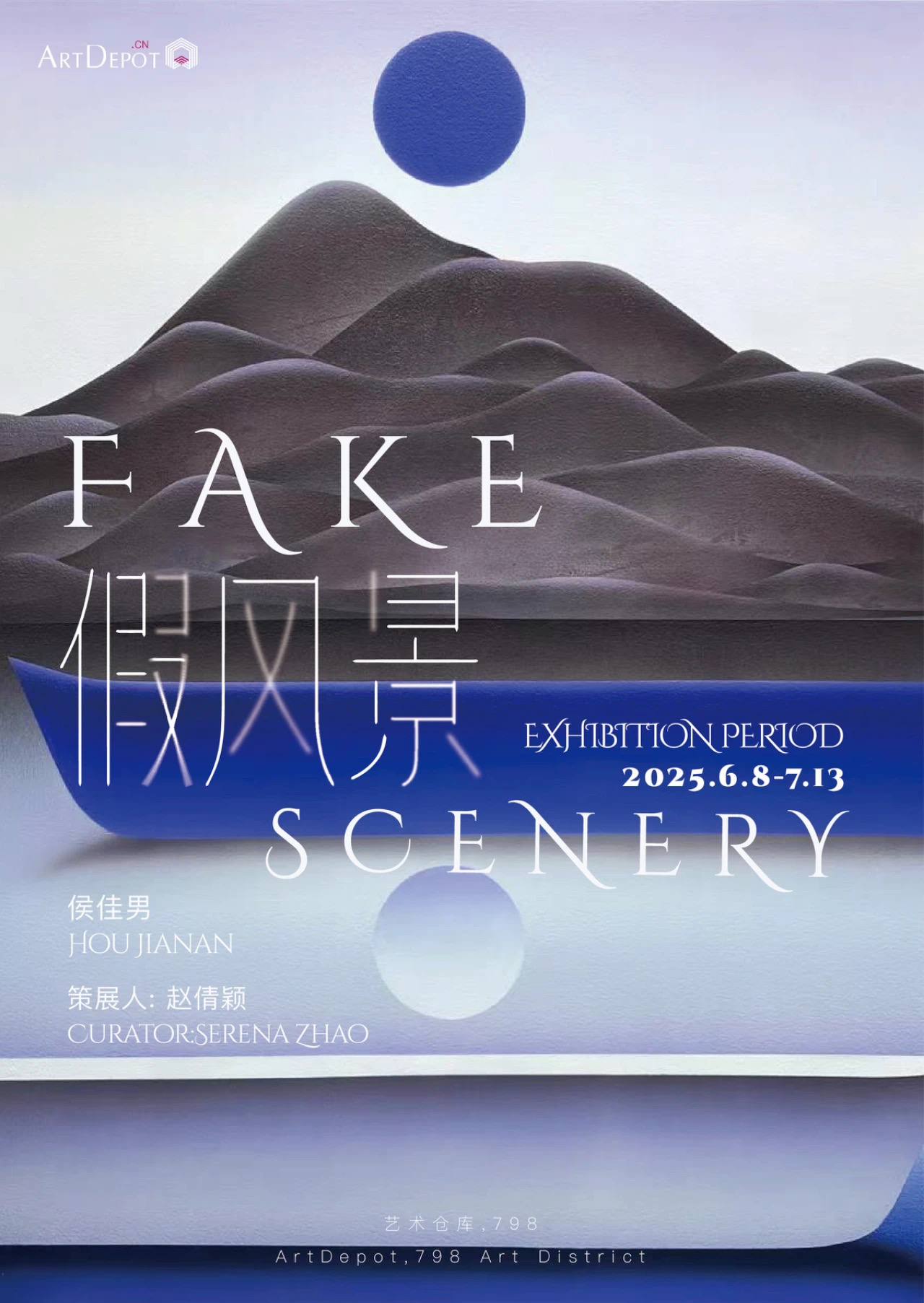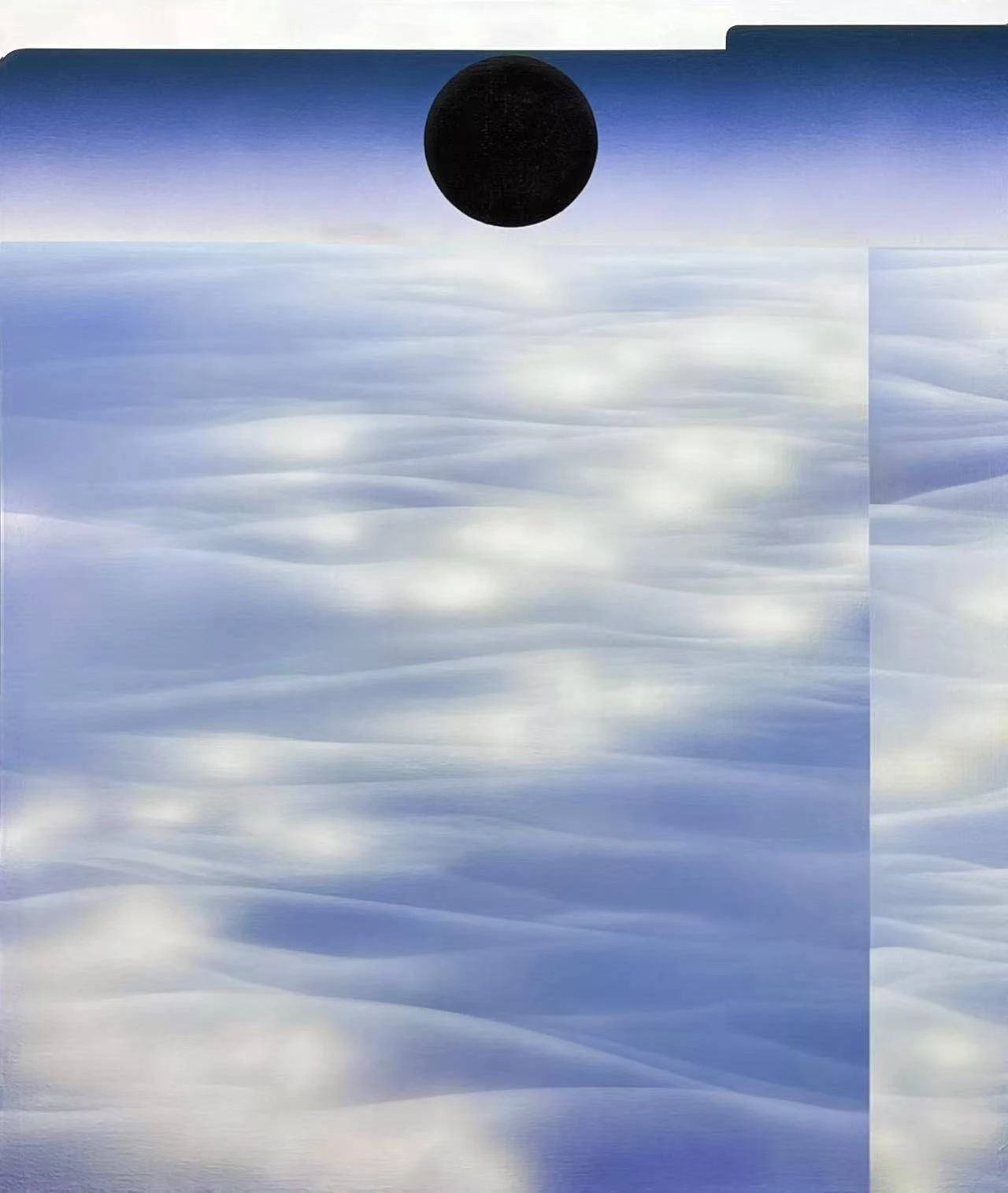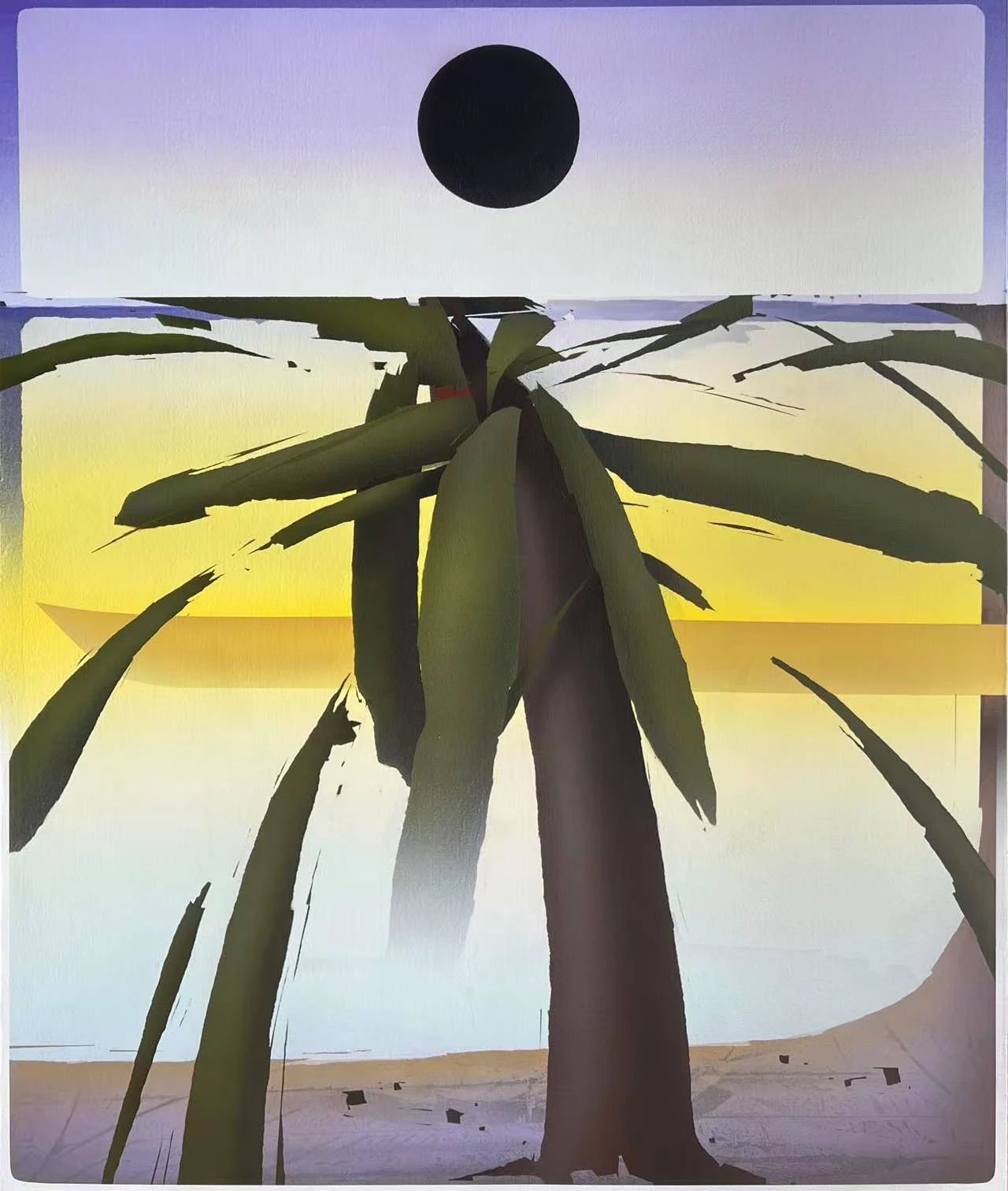



Those scenes in “hyperreality” that are more like reality than reality are actually already around us in our daily lives—streaming filters turn mountains and rivers into fluorescent candy colors, Google Maps uses algorithms to mark “best check-in coordinates,” and Instagram tags turn ancient streets and fjords into check-in assembly lines. The more perfect, smooth, and flawless the scenery on the screen is, the rougher the real nature appears—this is exactly the context reconstructed in “Fake Scenery”: from the liquid crystal-like ocean to the black sun and moon like the home button, what Hou Jianan reproduces with airbrush acrylic is not the scenery itself, but the visual afterimage repeatedly refracted by digital intermediaries. Those cold-glowing waves and standard gradient sunsets have become like electronic relics piled up in the data of likes and comments.

In the painting presented in " Fake Scenery", Hou Jianan deliberately created color blocks with arc-shaped corners, which are nested with the canvas layer by layer, and the delicate colors produce subtle changes in these areas. Frames and boundaries are interesting existences - the frame in the picture contains the distant scenery with a sense of depth, and the canvas integrates the foreground with it. In the exhibition hall, the clean white wall is the third layer of frame that has never been strictly defined. The Bauhaus-style spatial framework maximizes the rational beauty revealed in the straight hard edges, and the Kapoor-style geometric cutting spirituality generates a heterogeneous landscape on the screen and in the frame. The halo under the artist's spray gun regulates the temperature of the color, as if placing the landscape in a shrine.

The epistemological thinking about "picturesque scenery" in art history has been pushed forward again in Hou Jianan's latest creation. Just like the word "fake" in the title of the exhibition, it does not refer to hypocrisy, but reveals a more absurd reality: in the era of algorithm dominance, our cognition of scenery has long been domesticated into exquisite specimens by smooth interfaces.